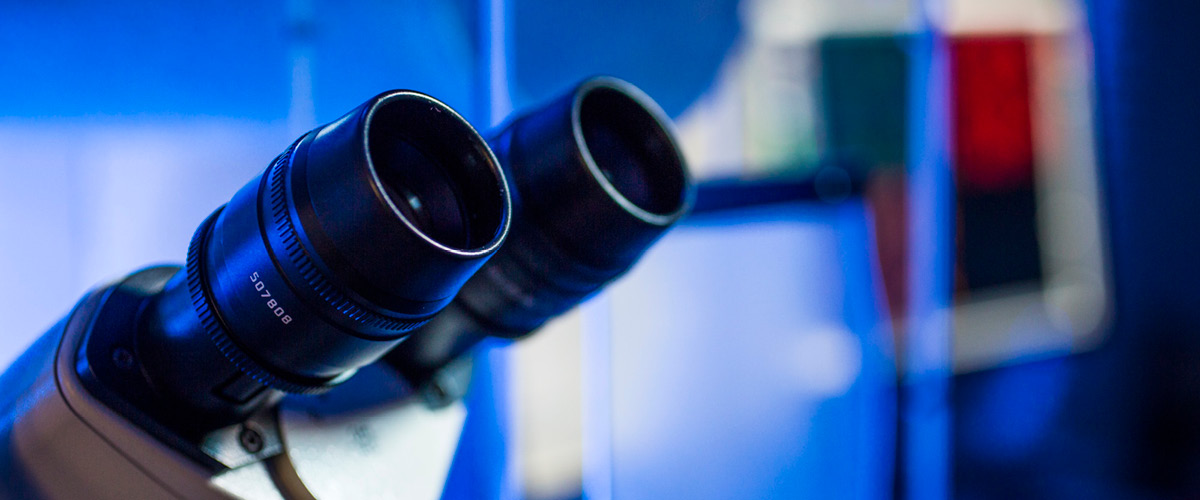
Research Projects Secure Competitive Federal Funding
Three noteworthy research projects led by New York Tech professors have received competitive awards from federal agencies, including the United States Department of Defense (DoD) and the National Aeronautics and Space Administration (NASA).
The projects, which collectively total $1,473,706, span the fields of biomedicine, physics, and engineering, and are captained by faculty from the College of Arts and Sciences and College of Engineering and Computing Sciences. Their findings could improve the quality of life for spinal cord injury (SCI) patients, facilitate the search for life on other planets, and advance understanding of mechanical engineering.
Studies will also engage students, providing excellent opportunities for them to gain a deeper understanding of the scientific process and mentorship from some of the university’s brightest minds.
“Aligned with New York Tech’s strategic goal of achieving R2 status, the Office of Sponsored Programs and Research remains committed to providing faculty with the training and guidance needed to develop highly competitive research proposals and dedicated support in managing awarded funding. We congratulate these researchers on their awards and look forward to supporting the scholarly community on additional projects that help to foster the institution’s growing research enterprise,” says Vice Provost for Research Jared Littman, Ph.D.
Treatment Seekers
A scientific investigation led by Research Associate Professor of Biological and Chemical Sciences Hesham Tawfeek, MBBCh, supported by a three-year grant from the DoD totaling $1,053,315, could provide new treatments for SCI patients.
More than 300,000 Americans live with SCI, a major trauma commonly caused by motor vehicle accidents, falls, stab wounds, gunshots, and explosions. One well-known instance of SCI is that of actor Christopher Reeve, who became paralyzed after sustaining a horseback riding injury.
Many of these patients experience lower limb paralysis, leaving them unable to perform the necessary weight-bearing and muscle contraction activities that promote bone health, such as walking. In turn, they may lose up to 41 percent of bone mass within the first year, which is much greater than the bone loss caused by other conditions, such as prolonged bed rest or aging. To further complicate matters, SCI bone loss does not respond to current therapies, increasing the risk of fractures even from minor trauma. In addition, while advanced walking aids and robotic or exoskeletal devices increase mobility, they require a strong skeleton; otherwise, patients can experience bone fractures with life-threatening complications.
Now, Tawfeek is researching the molecular processes that contribute to SCI-induced bone loss. His findings could lay the groundwork for new treatment strategies that minimize fracture risk and improve the quality of life for SCI patients.
Using a rodent model, Tawfeek and his research team will replicate the lower limb paralysis seen in humans with SCI. They hypothesize that in SCI, the nervous system’s sympathetic branch (the network of nerves that prepares the body’s “fight-or-flight” response) is dysregulated, contributing to immune T-cell dysfunction and subsequent bone loss. If successful in establishing this connection, their findings could pave the way for additional SCI studies into whether immune and sympathetic modulator medications, such as T-cell stimulants and beta-blocker drugs, preserve and restore bone structure. The findings could also lead to clinical trials in humans. The research team includes Jeffry S. Nyman, Ph.D., of Vanderbilt University Medical Center, and other New York Tech collaborators, including Distinguished Professor Michael Hadjiargyrou, Ph.D., a bone biologist. Tawfeek will also recruit and mentor student researchers from the College of Arts and Sciences.
Optical Innovators
NASA, through its MOSAICS (Mentoring and Opportunities in STEM with Academic Institutions for Community Success) program, has awarded hundreds of thousands of dollars in seed funding to two projects led by New York Tech researchers. The program funds research projects that build relationships between college faculty and researchers at NASA while providing mentorship and training for students in STEM disciplines.
Professor of Physics Ben Ovryn, Ph.D., secured funding for the project “Pathways from Undergraduate Research to the Habitable Worlds Observatory.” Ovryn and Breann N. Sitarski, Ph.D., of NASA’s Goddard Space Flight Center, will explore optical engineering challenges associated with the Habitable Worlds Observatory: a telescope designed to search for signs of life on planets orbiting other stars in the Milky Way Galaxy. Research assistants include undergraduate students Avery Gilson (Physics, B.S.) and Michael Iannelli (Electrical and Computer Engineering, B.S.), as well as David Marocik and Altay Melikoglu (Mechanical Engineering, B.S.). They are joined by alumna Mary Roberts (B.S. ’22), who serves as a near-peer research assistant.
Associate Professor of Mechanical Engineering James Scire, Ph.D., obtained funding for his project,“Point-Diffraction Interferometer for Digital Holography.” In collaboration with a NASA co-investigator, Scire aims to develop a new optical system to study acoustic levitation (when sound waves hold objects in mid-air) and other fluid mechanics. Mechanical engineering majors Cristina Kim and Dusten Atlas have been recruited to assist.
More News
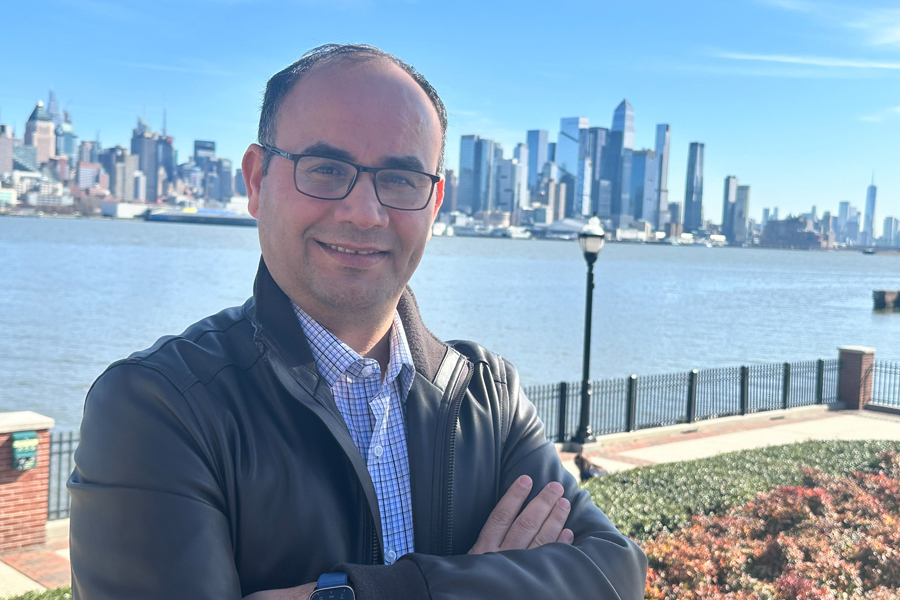
What Cancer Can Teach
By learning how cancer cells grow, Assistant Professor Karrer Alghazali, Ph.D., hopes to use that knowledge as a tool to grow healthy cells through biomimcry.
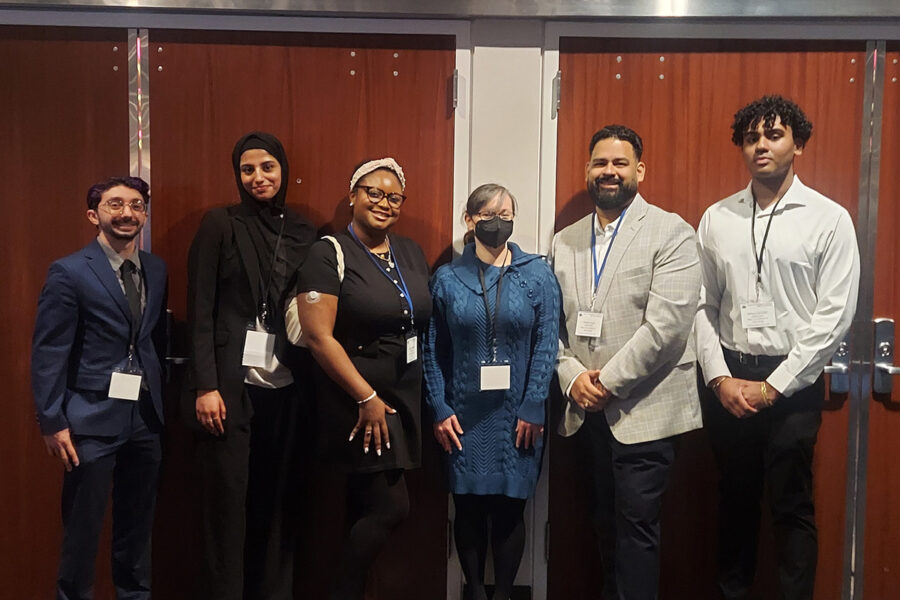
Young Scholars Present at Annual Psychology Conference
College of Arts and Sciences faculty, students, and alumni presented their scholarly research at the 96th Annual Meeting of the Eastern Psychological Association.
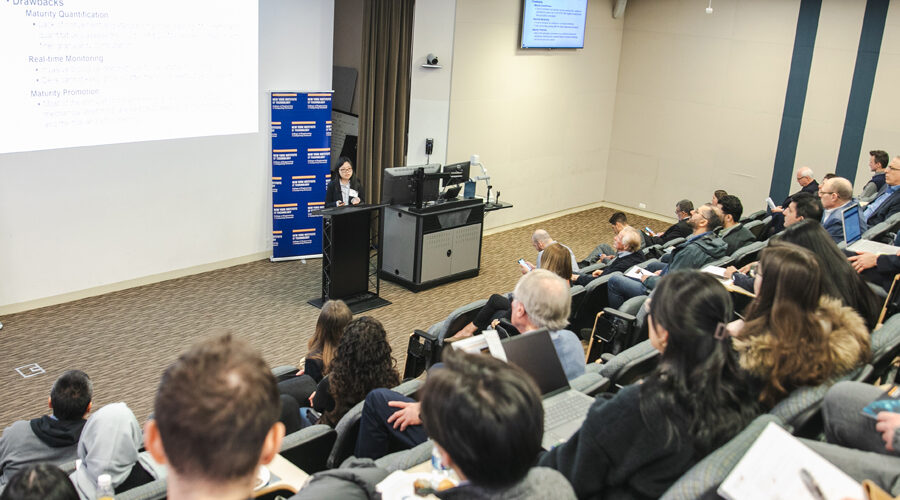
Biotechnology Conference Explores New AI Frontiers in Healthcare
At the Fifth Annual Biotechnology Conference, attendees gathered to exchange innovative research and share ideas centered on the future of medicine and therapeutics through artificial intelligence (AI) and cutting-edge technologies.
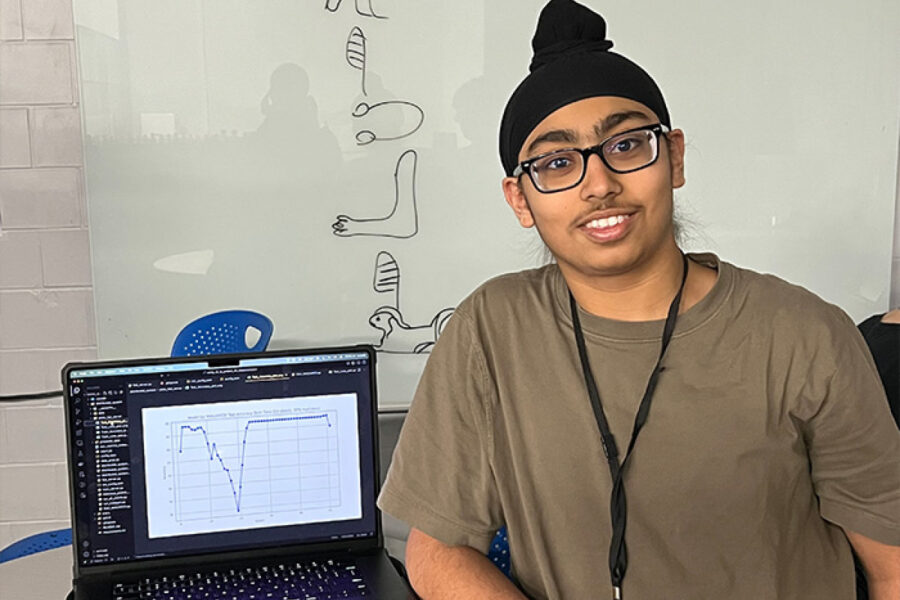
Awarding High School Researchers
New York Tech has completed the eighth year of its Mini-Research Grant Awards program, continuing its commitment to undergraduate research and encouraging high school students to pursue STEM fields.
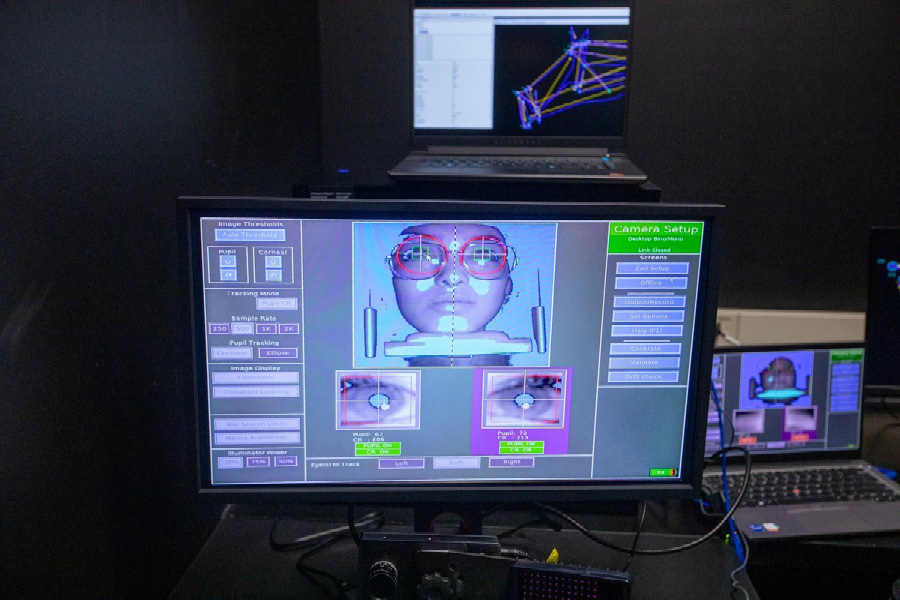
Setting Their Sights on Research
Two undergraduate students have received external grants in support of research projects exploring the connection between eye movement and perception.

Unwrapping Narcissistic Gift Giving
This holiday season, research by the School of Management’s Colleen P. Kirk, D.P.S., reveals that narcissists’ gift-giving behavior is all about them.